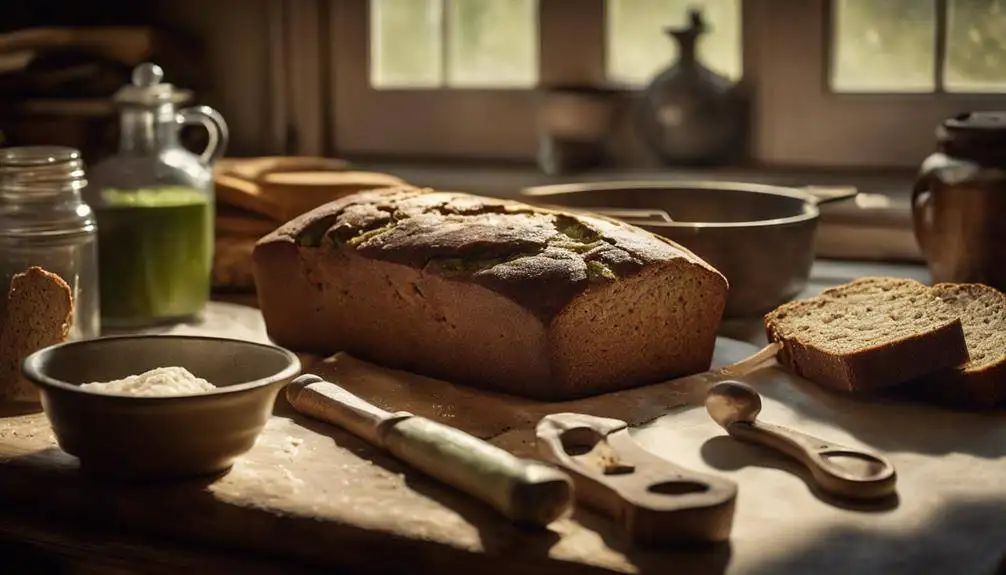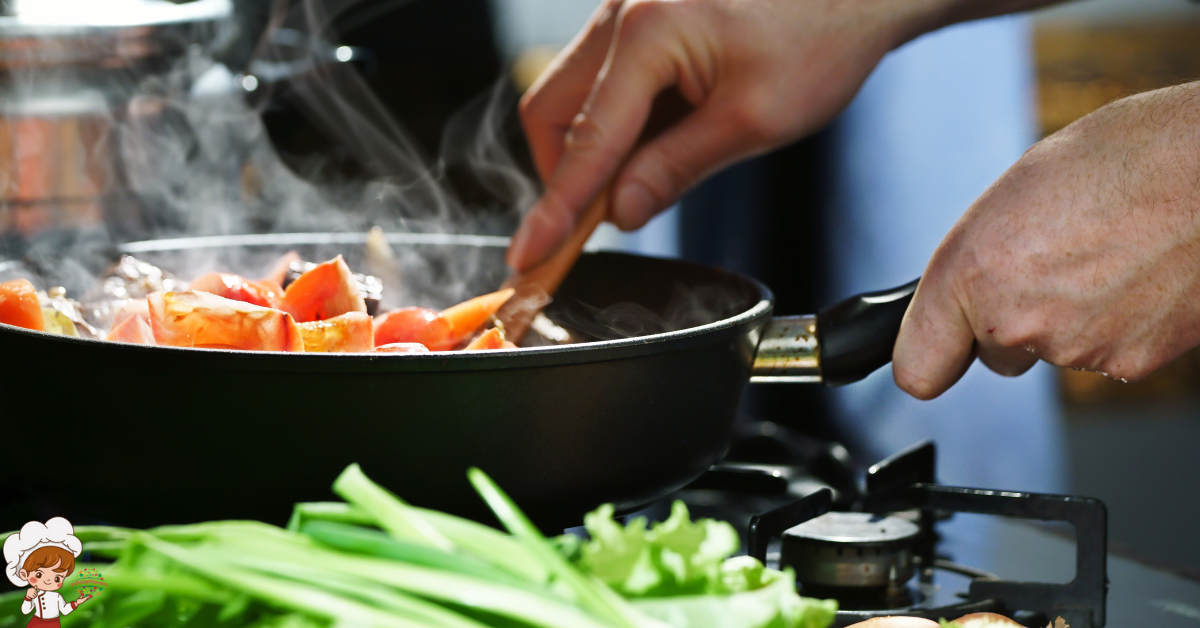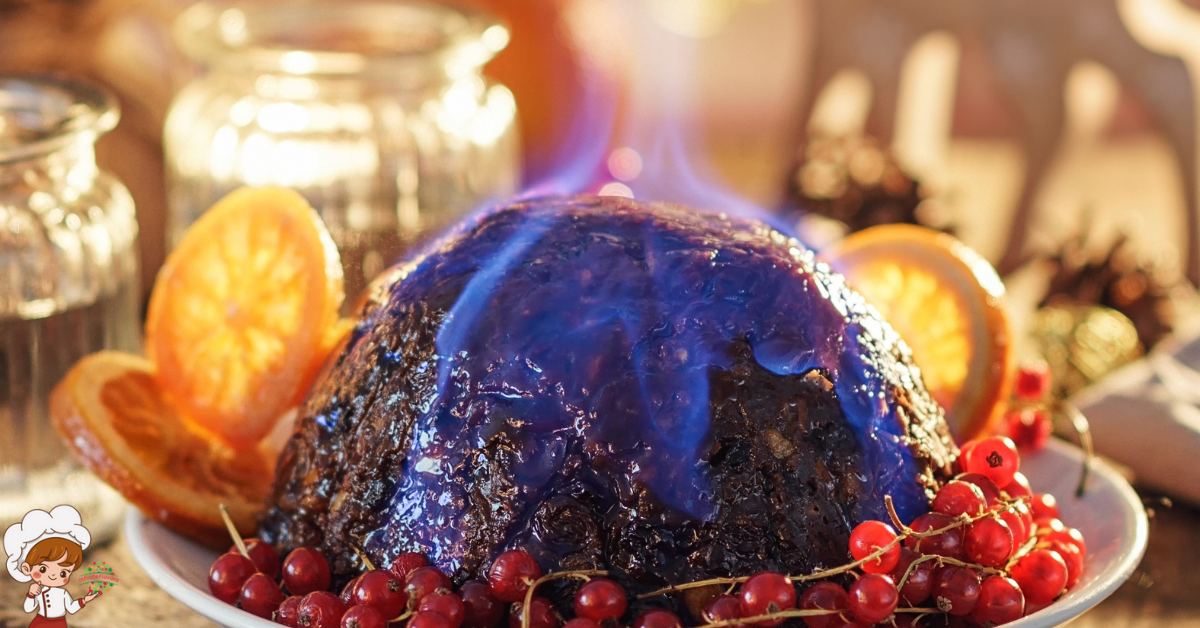The Best Mini Apple Pies
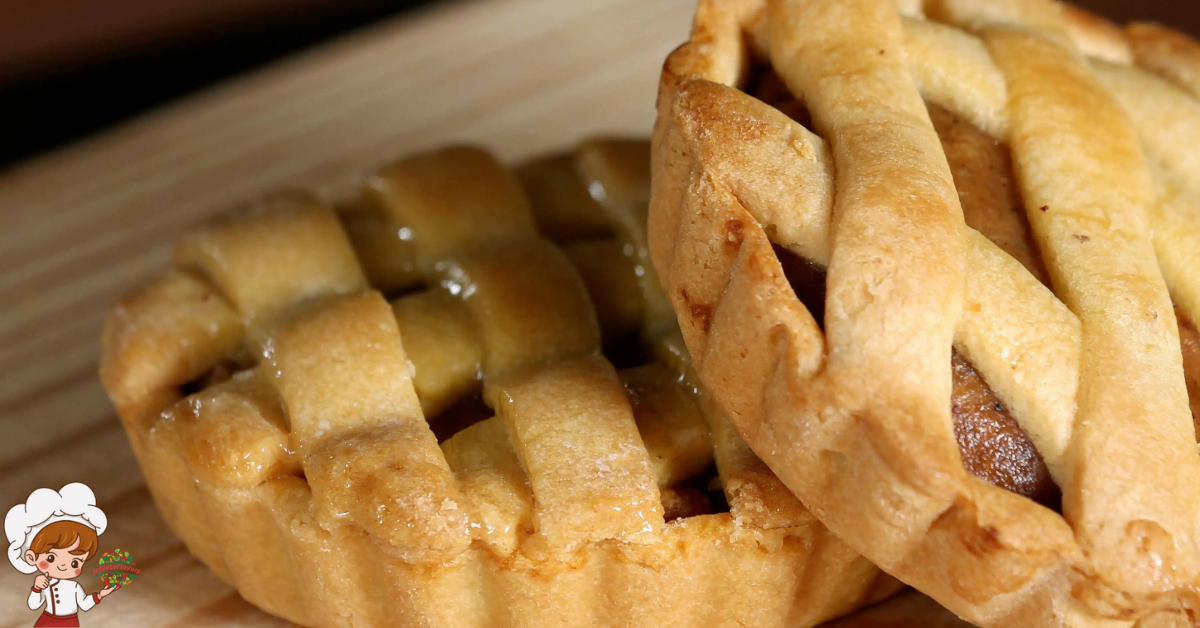
The genesis of Mini Apple Pies can be traced back through the annals of history, to an era where culinary ingenuity flourished and simple ingredients were transformed into delightful delicacies. While the precise origins may be shrouded in the mists of time, pie-like creations have been documented in various ancient civilizations, marking the humble beginnings of what would eventually evolve into the miniature apple pie we know and love today.
In ancient Egypt, evidence suggests the existence of early forms of pies, with hieroglyphs depicting individuals baking in rudimentary ovens. These early pies were often made with simple ingredients like grain, honey, and fruits, baked within a primitive crust made of crushed grains and water. While not resembling the apple pie as we know it, these early creations laid the groundwork for the evolution of pastry-based desserts.
The ancient Greeks also contributed to the development of pies, with records indicating the existence of meat-filled pastries known as ‘gastris.’ These early pies were typically filled with a mixture of meat, vegetables, and spices, enclosed in a pastry crust. While sweet fruit fillings like apples were not commonly used at this time, the Greeks’ culinary innovations paved the way for the exploration of new flavors and combinations.
Similarly, the Romans embraced the art of pie-making, incorporating ingredients like meat, cheese, and honey into their savory and sweet pies. The Roman Empire’s expansive influence spread the practice of pie-making throughout Europe, where it continued to evolve and adapt to local tastes and ingredients over the centuries.
As time progressed, pies became an integral part of medieval European cuisine, with elaborate pie crusts adorned with intricate designs serving as centerpieces at feasts and celebrations. It was during this period that the concept of enclosing fillings within a pastry crust became more refined, laying the foundation for the pies of the future.
While the early iterations of pies may not have resembled the miniature apple pies we enjoy today, they represent the first steps in a culinary journey that would span centuries and continents. From the humble beginnings of ancient civilizations to the sophisticated pastries of medieval Europe, the evolution of pie-making reflects humanity’s enduring love affair with food and the creative spirit that drives culinary innovation.
Medieval Europe: Pies Fit for Royalty
During the medieval period in Europe, pies underwent a transformation from simple fare to culinary marvels fit for royalty and nobility. This era marked a significant advancement in pie-making techniques, with pies becoming a symbol of wealth, status, and culinary artistry.
Pies were a ubiquitous presence in medieval European kitchens, gracing the tables of both peasants and nobles alike. The crust, made from flour and water, served not only as a vessel for holding the filling but also as a preservative, allowing ingredients to be stored and enjoyed over several days.
In medieval Europe, pies were commonly filled with a variety of ingredients, including meats such as venison, rabbit, and poultry, as well as fruits, nuts, and spices. These fillings were often combined with savory herbs and seasonings, creating complex flavor profiles that appealed to the discerning palates of the nobility.
One of the most famous pie recipes from medieval Europe is the “coffin pie,” named for its coffin-like shape. This pie consisted of a sturdy pastry crust filled with a mixture of meats, fruits, and spices, often encased in an elaborate crust adorned with intricate designs and decorations. Coffin pies were a staple at medieval feasts and banquets, where they served as centerpieces that showcased the host’s wealth and hospitality.
As trade routes expanded and exotic ingredients became more readily available, medieval European cooks began experimenting with new flavors and fillings for their pies. Spices such as cinnamon, cloves, and nutmeg, imported from distant lands, were prized for their ability to enhance the taste of both sweet and savory pies.
The art of pie-making flourished in medieval Europe, with professional pie-makers, known as “pyemen,” plying their trade in bustling marketplaces and royal kitchens. These skilled artisans were responsible for creating pies of all shapes and sizes, from small hand pies enjoyed by peasants to grand, intricately decorated pies served at royal banquets.
In addition to their culinary appeal, pies held symbolic significance in medieval European culture. They were often featured in religious ceremonies and celebrations, with special pies baked to commemorate holidays and festivals.
Overall, the medieval period in Europe marked a golden age of pie-making, with pies evolving from simple, rustic dishes to elaborate creations that showcased the culinary skills and creativity of medieval cooks.
Colonial America: Pies on the Frontier
In Colonial America, pies continued to play a central role in the culinary landscape, evolving to reflect the tastes and ingredients available in the New World. As European settlers established colonies along the Eastern seaboard, they brought with them their pie-making traditions, adapting them to suit the resources and conditions of their new home.
One of the defining characteristics of pies in Colonial America was their versatility. Pies were a staple of colonial cuisine, enjoyed by people from all walks of life, from wealthy plantation owners to humble farmers. They could be filled with a wide array of ingredients, including fruits, meats, vegetables, and even seafood, making them a convenient and adaptable meal option for colonial households.
Fruit pies were particularly popular in Colonial America, as settlers took advantage of the abundance of fresh fruit available in the New World. Apple pies, in particular, became an iconic American dish, with colonists using native varieties of apples to create deliciously sweet and tart fillings.
In addition to fruit pies, savory pies also had a place on the colonial table. Meat pies, such as chicken pot pie and beefsteak pie, provided a hearty and satisfying meal for colonial families, especially during the harsh winter months when fresh produce was scarce.
The crust of colonial pies was typically made from flour, water, and fat, either butter or lard, and was often thick and sturdy, serving as a vessel for holding the filling and providing a satisfying crunch. Unlike modern pies, which are often sweetened with sugar, colonial pies tended to be less sweet, with the focus placed on the natural flavors of the ingredients.
Colonial America also saw the emergence of regional pie-making traditions, with different colonies developing their own unique styles and recipes. In New England, for example, settlers adapted traditional English pie recipes to include local ingredients such as cranberries and maple syrup, while in the Southern colonies, pies were influenced by African, Native American, and European culinary traditions, resulting in a rich and diverse array of flavors.
Overall, pies played a vital role in shaping the culinary identity of Colonial America, serving as a versatile and beloved dish that reflected the cultural melting pot of the New World.
Industrial Revolution and Beyond: Pies for the Masses
The Industrial Revolution marked a pivotal moment in the history of pie-making, transforming it from a labor-intensive craft practiced in homes and small bakeries to a mass-produced commodity available to the masses.
During the late 18th and 19th centuries, advancements in technology, such as the invention of steam-powered machinery and mechanical refrigeration, revolutionized the way pies were produced and distributed. Industrialization enabled bakeries to increase their output and expand their reach, making pies more accessible to people across socio-economic strata.
One of the most significant innovations of this era was the development of commercially manufactured pie crusts. Prior to this, pastry dough was typically made by hand, a time-consuming process that required skill and practice. However, with the advent of mechanical dough rollers and pie-crust machines, bakeries could produce large quantities of uniform crusts quickly and efficiently.
This mass production of pie crusts paved the way for the proliferation of pie shops and bakeries, which sprang up in towns and cities across America. These establishments offered a wide variety of pies, catering to diverse tastes and preferences.
The Industrial Revolution also brought about changes in the types of pies consumed. While traditional fruit pies remained popular, new varieties, such as meat pies and savory pot pies, gained popularity as convenient, portable meals for busy urban dwellers.
Furthermore, the rise of canned goods and preserved ingredients during this time allowed bakers to experiment with new flavors and fillings for their pies. Canned fruits, like cherries and peaches, became staples in fruit pies, while canned meats, such as chicken and beef, found their way into savory pies.
As the 20th century dawned, the pie industry continued to evolve, with the advent of commercial refrigeration and transportation further facilitating the distribution of pies on a national scale. Bakeries could now ship their products across long distances, making pies a ubiquitous presence in supermarkets and grocery stores.
Despite these advancements, homemade pies remained a cherished tradition in American households, with families passing down treasured recipes from generation to generation. The Industrial Revolution may have transformed the way pies were made and consumed, but it could never diminish the enduring appeal of a homemade pie made with love and care.
Modern Variations and Resurgence:
In recent years, mini apple pies have experienced a renaissance, spurred by a growing interest in artisanal and homemade foods. Home cooks and professional bakers have embraced the trend of miniaturizing classic desserts, including apple pie. These bite-sized delights are crafted using traditional pie crust or puff pastry, filled with a spiced apple concoction, sometimes adorned with caramel drizzle, nuts, or raisins for an extra touch of flavor.
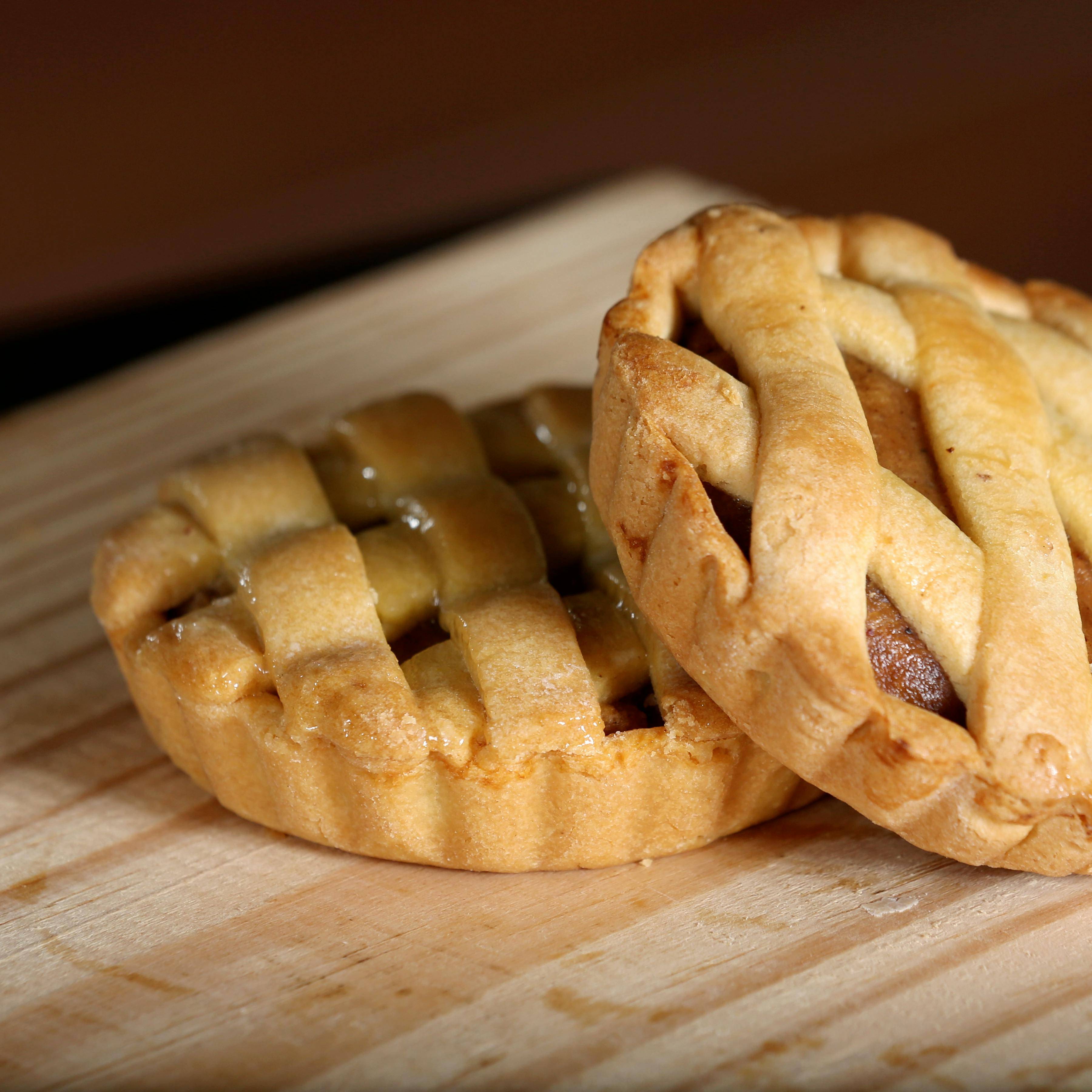
Mini Apple Pies
Ingredients
- For the Pie Crust:
- 1 1/4 cups all-purpose flour
- 1/2 teaspoon salt
- 1/2 tablespoon granulated sugar
- 1/2 cup cold unsalted butter cut into small cubes
- 3-4 tablespoons ice water
- For the Filling:
- 3 medium-sized apples such as Granny Smith or Honeycrisp, peeled, cored, and diced
- 1/4 cup granulated sugar
- 1/4 cup packed light brown sugar
- 1 tablespoon all-purpose flour
- 1/2 teaspoon ground cinnamon
- 1/4 teaspoon ground nutmeg
- 1/8 teaspoon salt
- 1 tablespoon lemon juice
- 1 tablespoon unsalted butter diced
- For Assembly:
- 1 egg beaten (for egg wash)
- 1 tablespoon granulated sugar for sprinkling
Instructions
- Prepare the Pie Crust:
- In a large mixing bowl, whisk together the flour, salt, and sugar.
- Add the cubed butter to the flour mixture. Using a pastry cutter or your fingers, work the butter into the flour until it resembles coarse crumbs.
- Gradually add the ice water, one tablespoon at a time, mixing with a fork until the dough begins to come together.
- Turn the dough out onto a lightly floured surface and knead it gently until it forms a smooth ball. Flatten the ball into a disc, wrap it in plastic wrap, and refrigerate for at least 30 minutes.
- Prepare the Filling:
- In a large mixing bowl, combine the diced apples, granulated sugar, brown sugar, flour, cinnamon, nutmeg, salt, and lemon juice. Toss until the apples are evenly coated.
- Assemble the Pies:
- Preheat your oven to 375°F (190°C). Line a baking sheet with parchment paper.
- On a lightly floured surface, roll out the chilled pie dough to a thickness of about 1/8 inch. Using a round cookie cutter or the rim of a glass, cut out circles of dough that are slightly larger than the openings of your mini muffin tin.
- Gently press each dough circle into the wells of the mini muffin tin, forming small pie crusts.
- Fill each pie crust with a spoonful of the apple filling, pressing it down lightly to pack it in. Top each pie with a small piece of diced butter.
- Top and Bake the Pies:
- Roll out any remaining pie dough and cut it into thin strips. Arrange the strips in a lattice pattern over the tops of the mini pies, trimming any excess dough as needed.
- Brush the tops of the pies with beaten egg, then sprinkle them with granulated sugar.
- Place the mini muffin tin in the preheated oven and bake for 18-20 minutes, or until the crust is golden brown and the filling is bubbling.
- Remove the pies from the oven and allow them to cool in the muffin tin for 5 minutes before transferring them to a wire rack to cool completely.
- Serve and Enjoy:
- Once cooled, carefully remove the mini apple pies from the muffin tin and serve them warm or at room temperature. Enjoy them as a delightful sweet treat or dessert for any occasion!
Versatile and Beloved:
Today, mini apple pies are cherished for their versatility. Whether served warm or cold, plain or with a dollop of whipped cream or a scoop of vanilla ice cream, they bring joy to any occasion. Whether enjoyed as a sweet snack, a delectable dessert, or even a delightful breakfast treat, mini apple pies evoke feelings of warmth and nostalgia.
Conclusion: Mini Apple Pies
From ancient civilizations to modern kitchens, the journey of mini apple pies reflects the enduring appeal of a classic dessert. As we savor each bite, we’re reminded of the rich tapestry of culinary history and the simple pleasures that bring us together. So let’s celebrate the humble mini apple pie, a timeless delight that continues to captivate hearts and taste buds alike.




